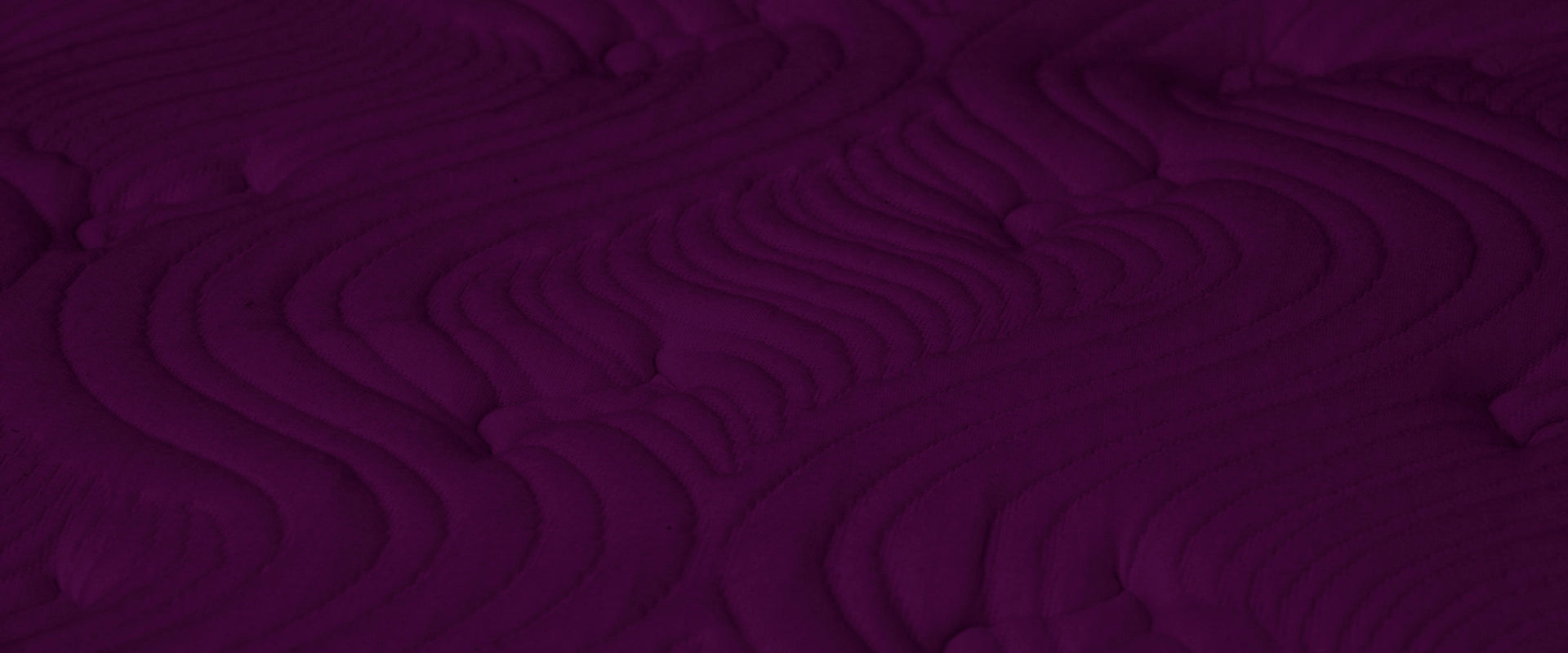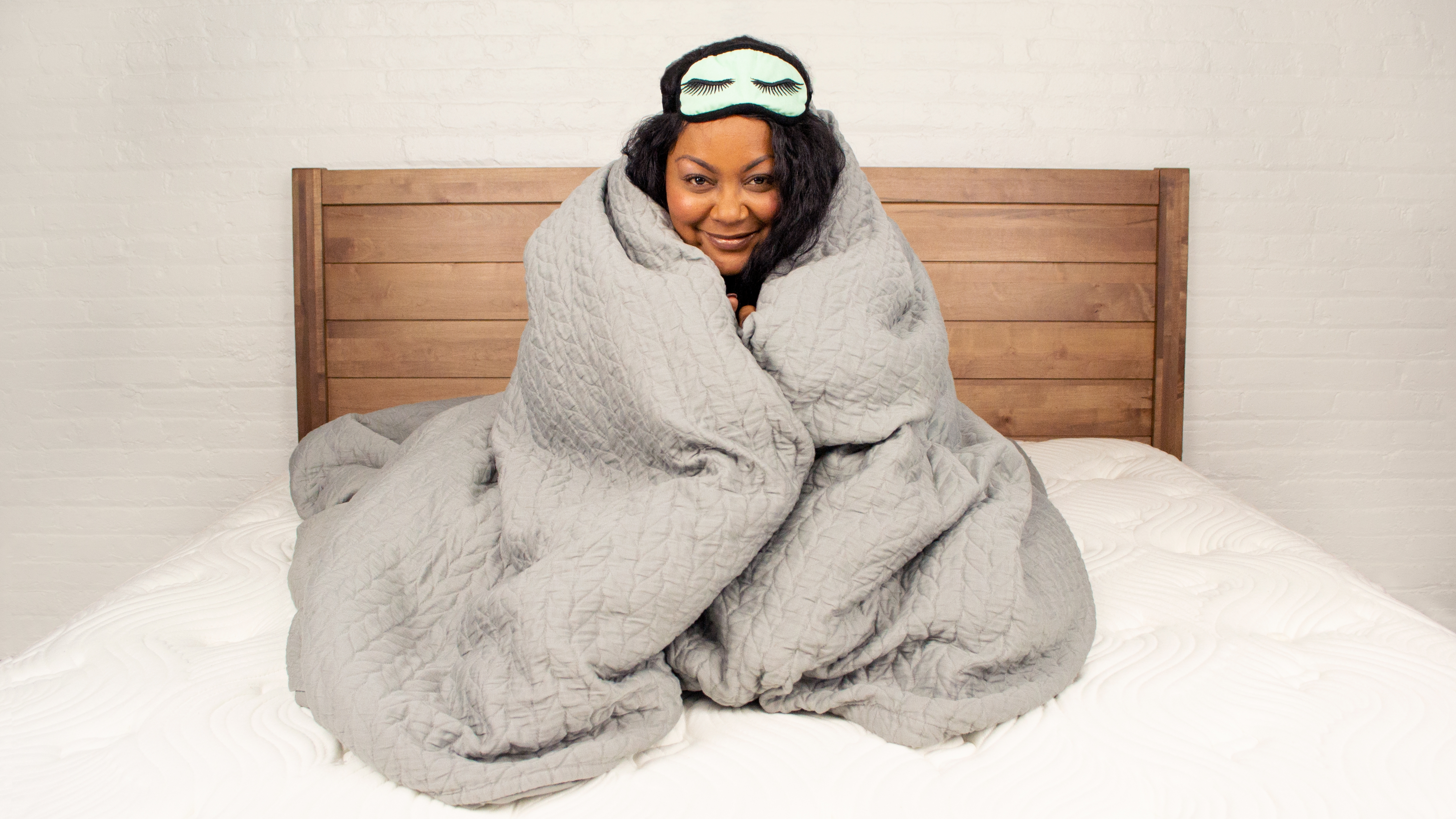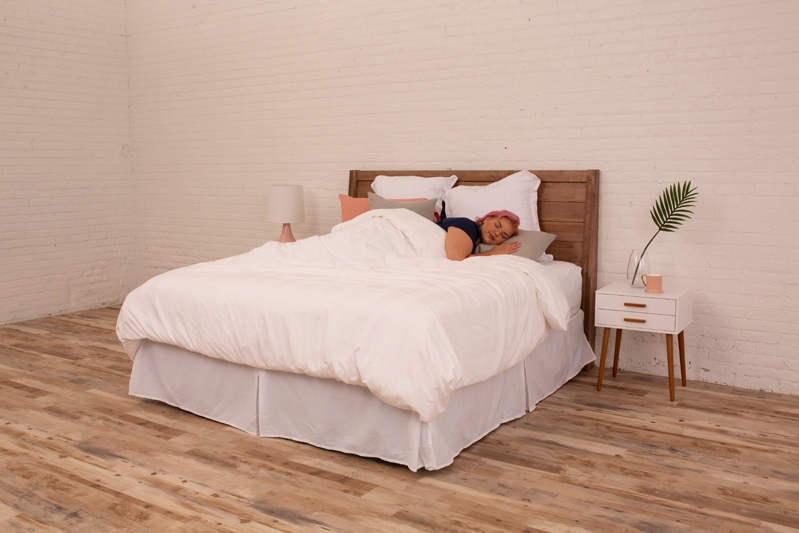Your bedding plays a significant role in creating the perfect sleep environment. While soft sheets and sleep aids are helpful, nothing beats the importance of choosing the right blanket to match your comfort needs. If you’ve ever woken up in the middle of the night freezing or sweating, you know just how crucial it is to find bedding that works for you.
Duvets and comforters, two popular choices for maintaining a cozy sleep environment, are designed to keep you warm. They differ in construction, style, and functionality, but both play a significant role in ensuring your comfort. And let’s not forget the aesthetic aspect—we all want our beds to look good, right? Bedding choices like duvets and comforters can also enhance the overall look of your bedroom.
In this guide, we’ll break down everything you need to know about duvets and comforters, their pros and cons, and how they differ so you can decide which one best fits your sleep style, climate, and decor preferences.
What is a Duvet?
A duvet is a soft, often white, comforter typically filled with down or a down alternative to keep you warm. Unlike a quilt, it’s designed to be paired with a duvet cover, which acts as a protective, removable fabric sleeve that you can easily wash. The duvet's warmth depends on its filling, and you can adjust your bedding by using the cover alone in warmer months or layering blankets underneath in colder seasons. Duvet covers come in a variety of materials and styles, often sold with matching shams to complete a cohesive bedroom look.
Characteristics of a Duvet
- Top-Notch Filling: Typically filled with down, feathers, wool, or synthetic materials, providing warmth and insulation.
- Soft and Fluffy Feel: Most duvets are lightweight yet fluffy, offering a cozy sleeping experience.
- Adjustable Warmth: The warmth level varies depending on the filling type, making duvets suitable for different seasons.
- Plain Exterior: Unlike a quilt, duvets usually come in white or neutral colors without decorative patterns, as they are meant to be used with a duvet cover. What is a quilt, you ask? It’s a multi-layered blanket made of a top fabric, a layer of batting (insulation), and a backing, all stitched together in decorative patterns, often used as both bedding and a decorative piece.
- Lightweight: Unlike heavy comforters or quilts, duvets are designed to feel light on the body. They trap body heat effectively, providing warmth without needing multiple layers of blankets.
Pros and Cons of a Duvet
A duvet can be a snuggly and versatile bedding option, but it also has a few disadvantages. Here’s a breakdown of the pros and cons.
Pros:
- You’ll Never Be Chilly: Or, you know, if you sleep with a certain someone who likes to crank up the A/C at night. Because this type of bedding has more filling, duvets tend to be much warmer than quilts but without the heaviness.
- Bedding Flexibility. A duvet is a smart option if you like changing your bedding with the seasons. Covers can be super inexpensive and are unbelievably easy to store. So stockpile a bunch, and you'll have an easy swap for your warm-weather and cold-weather moods.
- Infrequent Laundering. Since these babies don't really get dirty (they're tucked away inside your fancy-schmancy cover), you don't have to clean them as frequently.
- No More Night Sweats: Thanks to superior and adjustable temperature regulation, you don’t have to worry about sticky night sweats —especially when paired with our Big Fig Mattress and Premium Cooling Sheets and get ready for cooler, sweat-free nights!
Cons:
- Difficult to Insert: Inserting the duvet into the cover can be tricky and time-consuming.
- Shifting and Clumping: If not placed correctly on your bed, the filling may bunch up inside the cover, requiring frequent adjustments. It may continue to shift or clump over time, especially if it isn’t evenly distributed or lacks baffling (stitching that holds the filling in place).
- Requires a Cover: You typically need to buy a duvet cover separately, and the cost of good-quality covers can add up. Additionally, the cover needs regular washing, especially if it’s in direct contact with your skin.
- Maintenance: Down-filled duvets often require special care, such as professional cleaning or careful washing, to maintain their fluffiness while preventing damage to the filling.
What is a Comforter?
A comforter is a thick, quilted blanket used for warmth, typically filled with materials like down, feathers, wool, or synthetic fibers. It is designed to cover a bed and provide insulation while sleeping, often encased in a fabric shell. Comforters are usually placed over sheets and other bedding layers and are commonly used as a top layer in colder weather.
Characteristics of a Comforter
- Thickness and Warmth: Comforters are thick, providing insulation for warmth, which is ideal for colder weather.
- A Variety of Fill Materials: Common fill materials include down, feathers, wool, cotton, or synthetic fibers like polyester, affecting weight, warmth, and breathability.
- Durable Outer Fabric: The outer shell is often made of cotton, polyester, or a blend, chosen for softness and durability.
- Smart Stitching: Box-stitch or quilted designs distribute the filling evenly to prevent clumping.
- A Variety of Weights: The weight and warmth level varies depending on the fill material and season-specific design (lightweight for summer, heavier for winter).
- Design and Style: Often available in various colors, patterns, and styles to complement bedroom decor.
Pros and Cons of a Comforter
As with duvets, comforters have their own set of pros and cons to consider when making the best purchase for you and your full-figured partner.
Pros:
- Warmth: Comforters are designed to provide excellent insulation, keeping you warm during colder months, even if you like snuggling up next to your S.O.
- Softness: They are typically made with plush materials, offering a cozy and comfortable feel.
- Ease of Use: Unlike duvets, comforters don’t require separate covers, making them simple to use and maintain (who couldn’t get on board with that?).
Cons:
- Difficult to Clean: Comforters can be bulky and may require special cleaning, such as dry cleaning or a large washing machine.
- Less Customizable: Since they come as a single piece, you can't easily change the cover like you can with a duvet.
- Heat Retention: Some comforters may trap too much heat, leading to discomfort in warmer weather.
- Shorter Lifespan: Comforters can lose their fluffiness over time, especially after multiple washes.
- Bulky Storage: They can take up significant space when not in use.
- Less Bedding Flexibility: Comforters are not adjustable; if you want a lighter or heavier comforter based on your body temperature or the change of seasons, you’ll have to purchase a different weight.
What is the Difference Between a Duvet and a Comforter?
If all of these details are making your head spin, here’s a breakdown to help you confidently understand the difference between these two popular types of bedding.
Price: Generally, a duvet and cover combination tends to be more expensive than a comforter. A Comforter is usually sold as a single unit, ready to use, with the fill already sewn in. Comforter prices range from $30 to $400, depending on material and quality. A duvet insert (usually filled with down, down-alternative, or other materials) is purchased separately from the cover. The duvet itself can cost anywhere from $50 to $500, and the cover adds an extra $30 to $150 (or more for luxury fabrics). Together, a duvet and cover could set you back anywhere between $80 to over $600 bucks.
Comfort: Duvets offer more warmth, loft, and flexibility in terms of covers, making them ideal if you’re looking for a cozy, soft, and airy sleep experience. The ability to swap covers makes them more customizable. Comforters, on the other hand, provide a simpler, slightly heavier feel with a more consistent spread of filling. It may appeal to those who like a denser, evenly distributed weight.
Climate: When it comes to the temperature difference between a duvet with a cover and a comforter, it’s all about adaptability and insulation. A duvet with a cover is more versatile because you can switch the cover's material based on the season, allowing for easy peasy temperature regulation. Duvets, especially those filled with down, tend to be warmer but breathable, providing insulation without overheating. On the flip side, a comforter is a single piece with the fill sewn in. While you’ll certainly be warm and toasty, you’ll have less flexibility in controlling temperature. They’re also typically heavier and may trap more heat, making them less ideal for hot climates or sweaty summer nights.
Sleeping Habits: If you tend to move around a lot during sleep or frequently change your bedding style, a duvet with a cover is more practical. It allows for easy swapping of covers and weight customization based on the season. In contrast, a comforter might be better if you prefer simplicity and minimal upkeep because it’s a single unit that doesn't require frequent changing or adjustments.
Cleaning: A duvet consists of two parts: the insert and the cover. You can easily remove and wash the cover as frequently as needed. At the same time, the insert itself requires less frequent cleaning, typically needing professional laundering or a gentle machine wash, depending on the material. That said, maintaining a duvet is simpler on a day-to-day basis. On the other hand, a comforter is a single piece, so the entire comforter must be washed when it gets dirty, which can be cumbersome, especially for larger or thicker comforters that may need special care or professional cleaning.
How to Wash a Duvet
To wash a duvet, first remove the duvet cover, which can be machine-washed separately according to its care instructions.
- For the duvet insert, check the label for specific washing guidelines, as some materials, like down or wool, may require special care.
- Most duvets can be washed in a large-capacity washing machine using cold or warm water on a gentle cycle with mild detergent.
- Avoid bleach or fabric softeners, as they can damage the filling.
- After washing, thoroughly dry the duvet on low heat, adding a few clean tennis balls or dryer balls to help redistribute the filling and prevent clumping. Ensure it's completely dry to avoid mildew, which would no doubt spoil your sleeping experience!
How to Wash a Comforter
Again, the first step when cleaning any type of bedding is to check the care label for specific instructions. Some comforters may require dry cleaning.
- If machine washable, use a large-capacity washer to prevent overcrowding.
- Wash the comforter on a gentle cycle with cold or warm water and a mild detergent, avoiding bleach and fabric softeners.
- After washing, dry it on low heat in a large dryer, using that handy dryer or tennis ball trick to keep the filling evenly distributed.
- Ensure the comforter is fully dry before putting it back on your bed or storing it away.
Duvet vs. Comforter: Which is Better?
As with the
Duvet: If you get chilly easily or share a bed with someone who cranks up the A/C at night, a duvet could be your perfect bedding choice! They have more filling than comforters, making them much warmer and ideal for cold nights. Feeling too warm? Duvets are also incredibly versatile—simply switch out the duvet cover to match your bedroom's current season or temperature.
Duvet covers are affordable, easy to store, and easy to switch between warm-weather and cold-weather bedding. Plus, since the duvet itself stays tucked inside the cover, it doesn't need frequent washing. Opt for a machine-washable duvet to save on dry cleaning costs. However, if you have central A/C or live in a cooler climate, a duvet will keep you comfortable without making you too sweaty.
Comforter: A comforter is a ready-to-use bedding option that doesn’t require a separate cover, making it convenient right out of the package. While you can place a duvet cover over a comforter for extra protection, it’s not necessary. In fact, a comforter can even serve as the insert for a duvet cover. That said, you may prefer the ease of using it as-is!
Duvet Sizes vs. Comforter Sizes
One distinguishing feature of comforters when it comes to size is that they tend to be larger than duvets or quilts, often hanging over the sides of the bed. In contrast, duvets and quilts are typically designed to fit more precisely to the mattress size.
When selecting bedding, it’s essential to consider your mattress's size and thickness. If your mattress is particularly thick, sizing up on bedding, especially if you’re using a quilt or duvet cover, can ensure better coverage and a more comfortable fit. Here’s a general size guide to help you out. Just remember it’s always wise to check exact measurements from manufacturers, as sizes may vary slightly.
Twin
- Duvet: 64" x 88"
- Comforter: 66" x 86"
Twin XL
- Duvet: 64" x 92"
- Comforter: 68" x 90"
Full (Double)
- Duvet: 78" x 88"
- Comforter: 80" x 86"
Queen
- Duvet: 88" x 90"
- Comforter: 90" x 92"
King
- Duvet: 104" x 90"
- Comforter: 104" x 92"
California King
- Duvet: 104" x 96"
- Comforter: 108" x 96"







